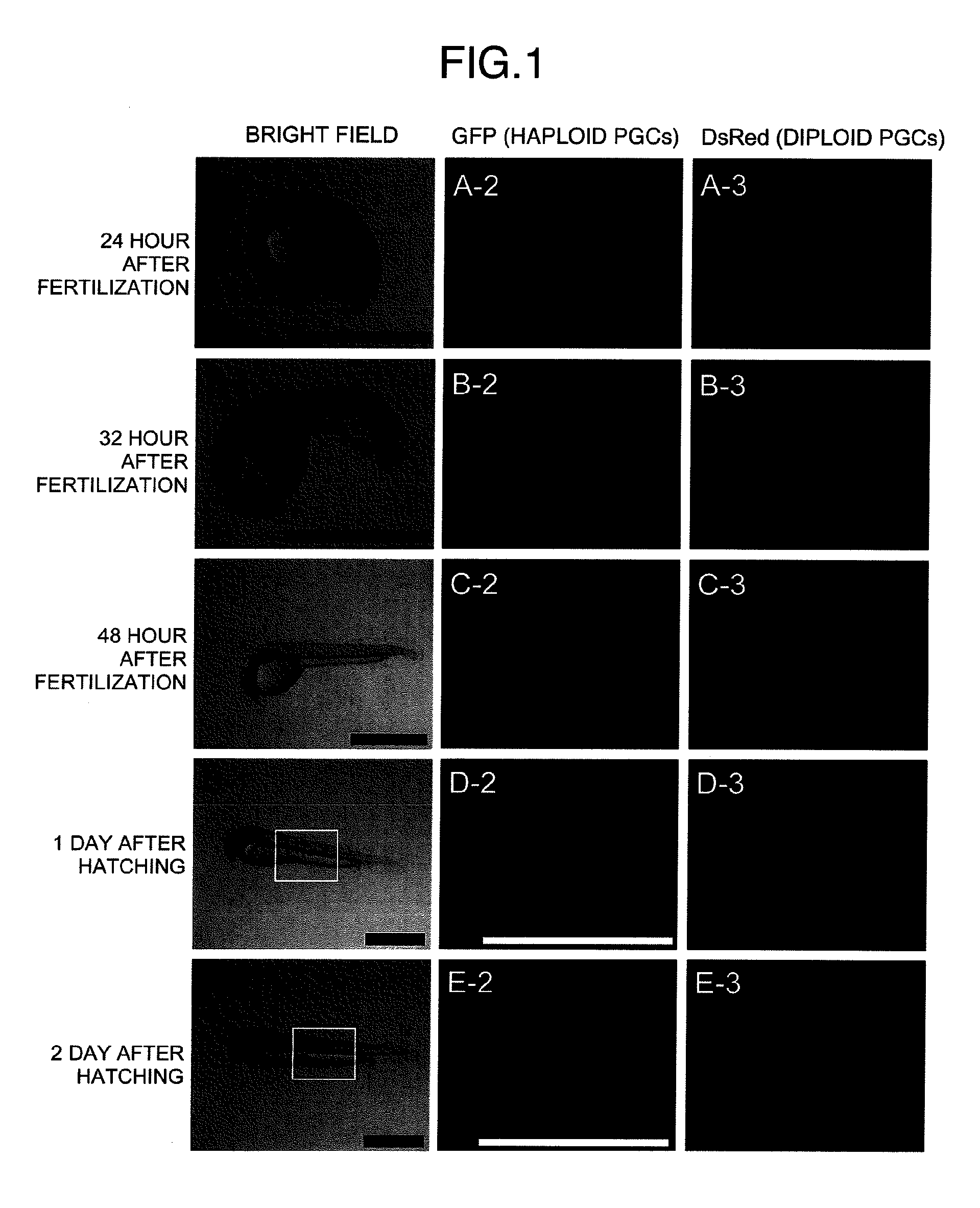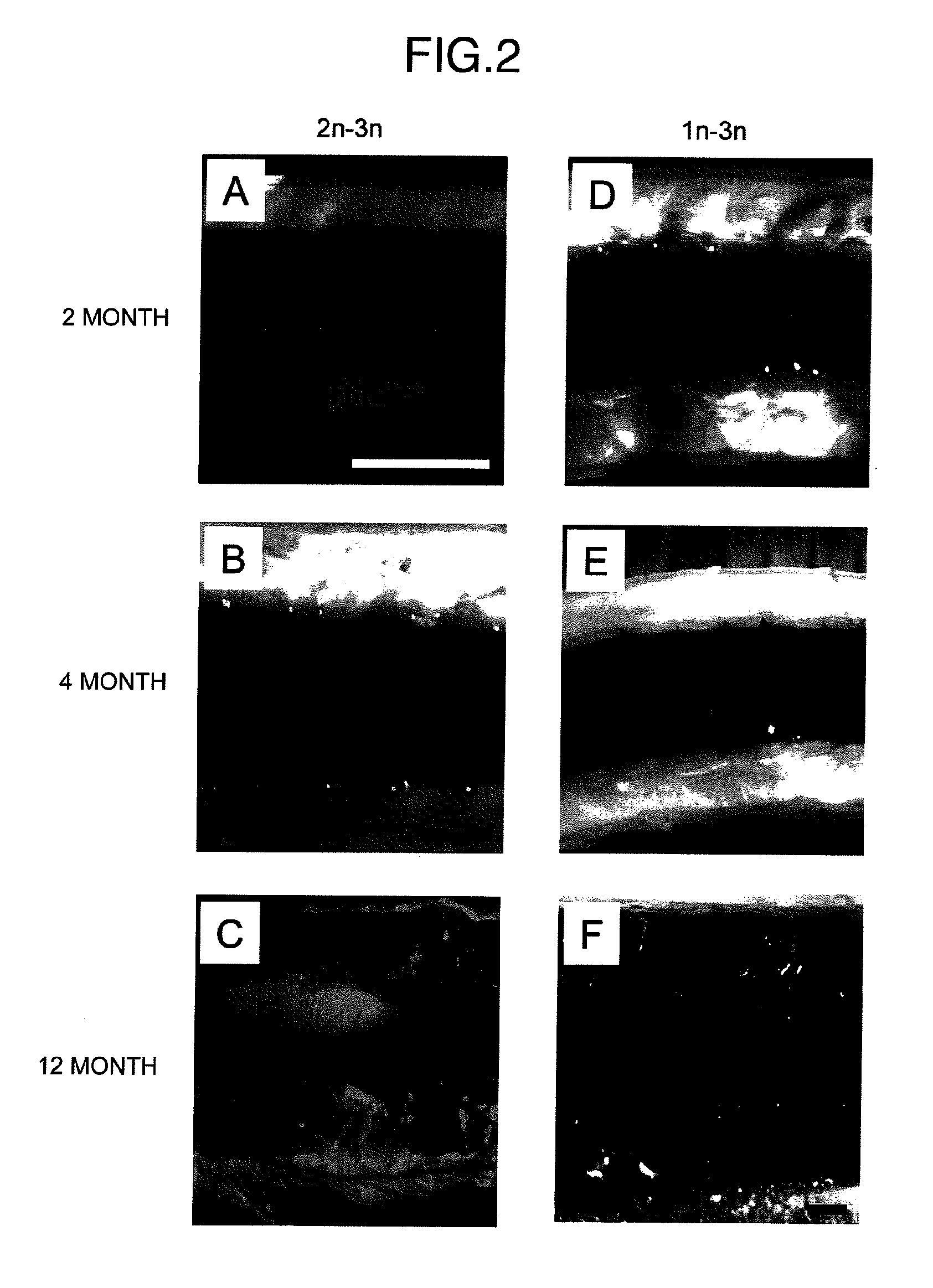Method for acquiring genetically identical gamete from lethal fish haploid-derived germ cell via germ line chimera
a technology of germ cell and haploid, which is applied in the field of acquiring a germ line chimeric fish having fish haploid germ cells, can solve the problems of reducing the ability of reproduction, the success rate of haploid doubling using this method is reported to be extremely low, and the majority of the haploid thus obtained are susceptible to death. , to achieve the effect of short period of tim
- Summary
- Abstract
- Description
- Claims
- Application Information
AI Technical Summary
Benefits of technology
Problems solved by technology
Method used
Image
Examples
examples
Case of Loach, Misgurnus anguillicaudatus
[0118]A. Material and Method
[0119]1. The loath Misgurnus anguillicaudatus was used as a material to produce a haploid-diploid germ line chimera (1n-2n) using a haploid as a donor and a normal diploid as a host and a haploid-triploid germ line chimera (1n-3n) using a haploid as a donor and a triploid as a host by a developmental engineering method as described below. The 1n-2n was produced with the object of examining whether haploid PGCs migrated to the genital ridge in the normal diploid individual like diploid PGCs. The 1n-3n was produced to examine whether haploid PGCs migrated to the genital ridge and proliferate as germ cells in a triploid host individual subjected to sterilization treatment by knock-down with the dead-end antisense morpholino oligonucleotide (SEQ ID NO: 1; 5′-GATCTGCTCCTTCCATTGCGTTTGC-3′) and whether functional gametes were formed in their gonads. To determine whether the resultant offspring is derived from the donor b...
PUM
 Login to View More
Login to View More Abstract
Description
Claims
Application Information
 Login to View More
Login to View More - R&D
- Intellectual Property
- Life Sciences
- Materials
- Tech Scout
- Unparalleled Data Quality
- Higher Quality Content
- 60% Fewer Hallucinations
Browse by: Latest US Patents, China's latest patents, Technical Efficacy Thesaurus, Application Domain, Technology Topic, Popular Technical Reports.
© 2025 PatSnap. All rights reserved.Legal|Privacy policy|Modern Slavery Act Transparency Statement|Sitemap|About US| Contact US: help@patsnap.com



